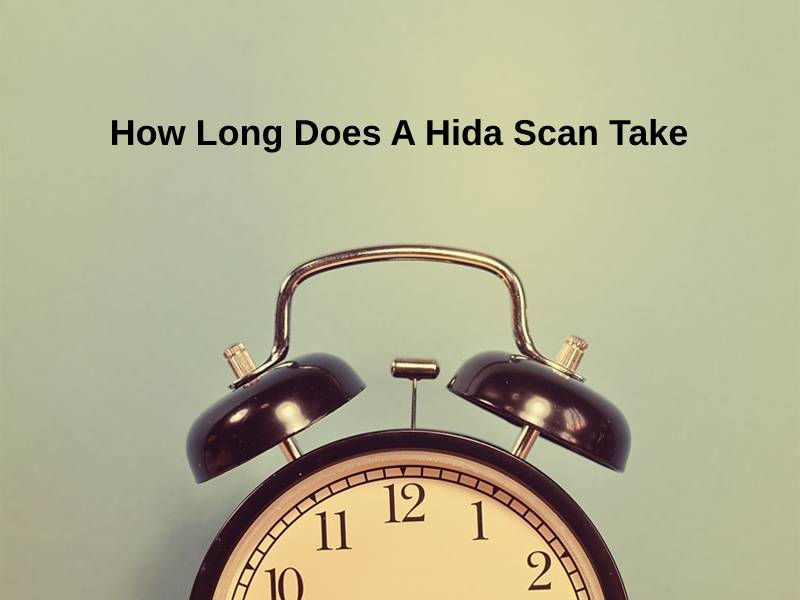Exact Answer: 1 hours and 30 minutes
HIDA scan is a type of diagnostic test that helps in capturing the images of the gallbladder, liver, small intestine, and bile ducts. This test helps to find out any health problems related to the specific organs. The digestion of fats is done by a substance known as bile. This procedure is also known as hepatobiliary scintigraphy that is used in gallbladder ejection fraction.
This test is used for measuring the rate of bile realized from the gallbladder. HIDA scan is also used in many ultrasound and X-rays tests. The HIDA scan takes somewhere around one and a half hours. Sometimes, the test is completed in just one hour.

How Long Does A Hida Scan Take?
| HIDA Scan | How Long Does A HIDA Scan Take |
| Minimum time required | 1 hour |
| Maximum time required | 1 hour and 30 minutes |
The HIDA scan is done after the following special preparations are correctly made. These are:
The person is required to fast for 4 hours before the beginning of the HIDA scan. Sometimes, the doctor may ask you to drink some liquids that are clear.
The doctor should be aware of all the medication taken by the person before doing the HIDA scan. Anyone taking supplements should inform the doctor before the beginning of the HIDA scan procedure.
Pregnant and breastfeeding women should inform about their condition to the doctor.
The imaging technician will ask you to wear the hospital gown for the HIDA scan after you reach the test center or medical. Don’t wear any metal accessories or jewelry to the test center.
The steps involved in the HIDA test are the following:
The person is supposed to lie down on the table or any other place where the test would be conducted. A camera would be positioned correctly above the belly of the person known as, a scanner by the imaging technician. An intravenous (IV) needle is inserted into the vein in the hand or arm by the imaging technician.
In the IV (Intravenous), the technician will insert or inject another radioactive tracer. The tracer would reach the liver by moving through the bloodstream and the bile-making cells would absorb the tracer. After this, the radioactive tracer would reach the gallbladder and small intestine through the bile duct.
The camera would be controlled by the imaging technician in order to capture all the images of the tracer. Sometimes, a pain medicine called morphine may also be inserted through the Intravenous line.
Why Does A HIDA Scan Take This Long?
The process of HIDA scan is time taking as the tracer may move at different speeds inside the body. If the result is normal then the tracer will move with the correct speed inside the body without any trouble. If the results are slow, then the speed of the tracer would be slower inside the body. Sometimes, the result of the HIDA scan comes as not present.
This can be a sign of acute cholecystitis or gallbladder inflammation. The time of the HIDA scan would be different depending on the results of the HIDA scan. The process of HIDA scan with Cholecystokinin (CCK) would require some additional steps.
In this procedure, the imaging technician would give the medicine directly in the mouth or through the vein. The images of the gallbladder would be captured by the technician both before and after the CCK.
HIDA scans are safe but some people may see potential side effects. Side effects such as:
Allergic reactions (because of the tracer used for the scan)
Exposure (towards the radiation)
Brushing (At the Intravenous site)
HIDA scan is a crucial test that is done after a liver transplant. As it will help in keeping a track of the working efficiency of the liver after the transplant.
Conclusion
Most people can get back to normal daily activities after having a HIDA scan. The radioactive tracer would come out of the body through urine or stool in a few days. The person should add a lot of water content in the body to get the tracer out of the body at the earliest. Diseases such as bile duct blockages and gallbladder inflammation are diagnosed with the help of a HIDA scan.
After the results are out, the doctor can inform you about the state of the organs involved in the HIDA scan.
 Samantha Nicole
Samantha Nicole